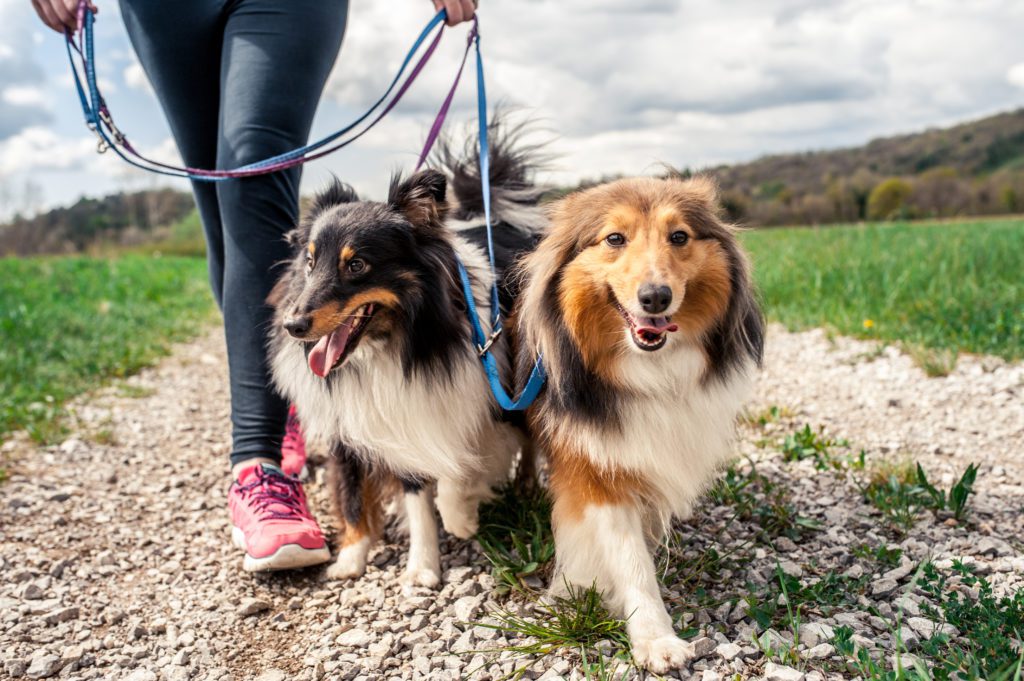 Walking Your Dog – So You Both Enjoy It!
Walking Your Dog – So You Both Enjoy It!
A tired dog is a well-behaved dog! Our canine friends need ample exercise for their physical – and mental – wellbeing. Regular walks prevent boredom, which can lead to chewing and other undesirable behaviors, and give them the stimulation they need for a happy, healthy life. Here are some tips for walking the walk.
Gather Your Supplies
One of the best parts of walking is that it requires very little gear. Tie up your sneakers, grab a water bottle (and a collapsible bowl or Ziploc bag so you can share), and make sure you have these essentials:
- A leash. When choosing your leash consider both your needs and those of your dog. For example, if your pooch tends to chew at the leash, a metal chain version can be a great addition to your walk. (Metal isn’t as appetizing!) If your dog pulls, nylon can cut into your hands, so leather might be a more comfortable option for you. There is a wide variety of styles and price points from which to choose.
- Treats. Use your walks as training opportunities. Bring along treats, and when your dog listens to commands (sit, stay, heel, etc.), reward him.
- Waste bags. Think you’re going to need one bag? Bring two (or three!). There are biodegradable options, and many people reuse their plastic grocery bags.
Step 1: Leashing Your Dog
When they hear walk, some dogs bolt for the door. They’re so excited that they can’t sit still so you can put the leash on. So don’t. If your dog is jumping or overly eager, stand still and don’t speak. Wait until he is settled, then try again. If he still jumps, pull your hands and the leash toward your body. Again, do not speak. When your dog has all four paws on the ground, attach the leash.
A walk is a treat, and this teaches your dog that he needs to be calm before he is rewarded.
Step 2: Walking!
It’s not always as easy as putting one foot in front of the other! One of the biggest challenges that dog owners face is leash pulling. This can turn a pleasant walk into a dreaded chore. How can you overcome – and enjoy your outing?
Dogs usually strain at the leash because they have an abundance of energy. If your pooch is a puller, try tiring him out before your walk. Play fetch or run around your hallway or backyard to expend some of that energy.
If he pulls on your walk, change direction abruptly. Go right, left, or turn completely around – but do it randomly so he doesn’t pick up on a pattern and start pulling again. This teaches him that you are the leader, and he must go where you want him to go.
Another option is to simply stop and stand still. As soon as you see slack in the leash, you can resume your walk.
What not to do: Pull back on the leash. It’s tempting but counterproductive. Dogs have an oppositional reflex. When they feel pressure, they pull against it – even if it hurts. So when you pull the leash, they pull back harder. Practice changing direction or stopping, and stay consistent. Your dog will learn. If you need more help, a head halter or no-pull harness can provide more control without harming your pet.
There are other challenges (such as distractibility – squirrel! – or lunging at passersby or other animals). If your dog displays these tendencies, ask a dog trainer or visit other online resources.
When you have a pet, remember the 2 P’s: patience and practice. Use these tips consistently, and don’t give up. Soon, your dog will be walking like a pro. And you get all the great benefits of walking for yourself too!


